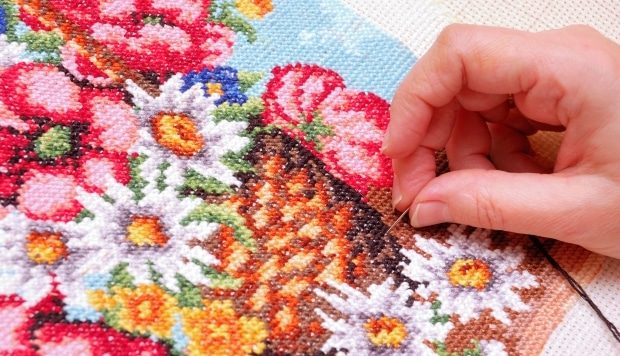Embroidery 101: How To Do Embroidery Like A Pro
Embroidery involves working with a needle and thread to create unique and aesthetically pleasing masterpieces. It means different things to different people.
For some people, embroidery is a passion while to others it’s a hobby. For another group of people, embroidery is a means to make a living.
It takes time to embroider like a pro, but practice makes perfect and after some time, you’ll get where you want to be.
A few tips on how to do embroidery like a pro follow.
1. Be Knowledgeable on Hand and Machine Embroidery
Hand and machine embroidery exist hand in hand and are equally useful. The choice to use either hand or machine embroidery depends on the embroiderer’s intent and the desired outcome.
The principle difference between hand and machine embroidery is the process of stitching. Hand embroidery allows you to provide unique work by using a variety of stitches, threads and fabrics.
An embroiderer adds a personal touch to their work, which brings satisfaction to both the embroiderer and the recipient. Machine embroidery provides uniform designs for all the stitched items and is particularly useful in mass production.
A computer program that has pre-made patterns controls the stitching on the machine. A frugal embroidery machine for hats and shirts is an example of an embroidery machine an expert embroiderer should learn to use.
2. Using the Right Needle
There are various types of needles used in embroidering different garments and designs. Tapestry, chenille and ribbon embroidery needles are the common types of needles used in embroidery.
Chenille needles, for example, have sharp points, large eyes, short width and are often used for wool work. The choice of a needle will depend on the design you want to create, the stitches you are using, the thickness of your threads and most importantly your personal preference.
3. Learn different Embroidery Stitches
Although back stitch and split stitch are the most common forms of stitching there are not the only ones. Other embroidery stitches include the feather, satin and tatami stitches.
The feather stitch is a decorative stitch used to make designs with curves and borders. Just like the feather stitch, a tatami stitch is a decorative stitch used to cover a large surface by stitching.
A satin stitch lies flat on fabric and is employed as a filling stitch. Although learning embroidery stitches may be hard at first, after regular practice the art is achieved.
4. Experiment Different Fabrics
An embroiderer can choose many fabrics ranging from cotton to linen and muslin. The choice of material depends on the type of embroidery you are working on and the embroidery technique you’re using.
Fabrics with a tight weave such as cotton, linen and wool are considered the best for embroidery both hand and machine. These fabrics provide a sturdy surface for stitching and support decorative stitching.
Experimenting with different fabrics gives you an opportunity to try a variety of materials and discover the one you enjoy embroidering on. Embroidery involves decorating fabrics using a needle and thread.
In the contemporary world, embroidery is seen on blankets, caps and dresses. It takes an expert to make impeccable and aesthetically pleasing embroidery that makes a statement.
To do embroidery like a pro, you should learn different embroidery stitches, experiment with different fabrics, use the right needle, and most importantly, love what you’re doing.







My oldest step-daughter wants to get into embroidery and hands-on, intricate crafts in the summer and is needing some tips to get started. I loved your advice to make sure that you get the right needle, which depends upon what kind of design you have in mind and personal preference. I’ll try to find her a hand stitch embroidery pattern to get her started soon.
Hi Sabrina
Thank you for sharing. I’m happy you got the point of getting the right needle. 🙂
Regards
Gerardo